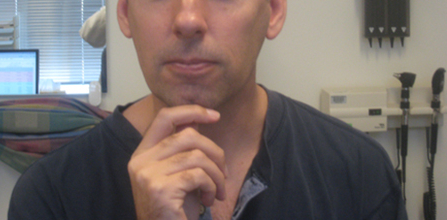Case history
Case history
A 40-year-old man presents with a history of neck stiffness and limited head mobility with the tendency for his head to turn to the right and tilt to the left. He has also developed increasing neck discomfort and an irregular tremor of the head. After worsening over 1 year, the symptoms have stabilized but persisted. He reports that the abnormal head positioning, pain, and tremor are partially relieved if he gently touches his left cheek with his hand. No other family members are affected.
Other presentations
The diagnosis of dystonia is often missed, sometimes for several years. Some dystonias may be mistaken for a functional neurologic disorder due to unusual features such as the irregular nature of the tremors or the sometimes surprising efficacy of a sensory trick ("geste antagoniste").[Figure caption and citation for the preceding image starts]: Rotational torticollisFrom the personal teaching collections of David K. Simon, MD, Daniel Tarsy, MD, and Ludy C. Shih, MD; used with permissions [Citation ends]. [Figure caption and citation for the preceding image starts]: The torticollis improves with a sensory trick: gently touching his chinFrom the personal teaching collections of David K. Simon, MD, Daniel Tarsy, MD, and Ludy C. Shih, MD; used with permissions [Citation ends].
[Figure caption and citation for the preceding image starts]: The torticollis improves with a sensory trick: gently touching his chinFrom the personal teaching collections of David K. Simon, MD, Daniel Tarsy, MD, and Ludy C. Shih, MD; used with permissions [Citation ends]. Early-onset generalized dystonia associated with TOR1A (also known as DYT1) mutations or dopa-responsive dystonia may mimic cerebral palsy, but early developmental milestones are usually normal.
Early-onset generalized dystonia associated with TOR1A (also known as DYT1) mutations or dopa-responsive dystonia may mimic cerebral palsy, but early developmental milestones are usually normal.
Use of this content is subject to our disclaimer